|
AP Learning Objective:
Explain the causes and effects of international and internal migration patterns over time. Learning Target: I can discuss the political, social, economic, & religious tensions that divided Americans during the 1920s. Critical Vocabulary: Imperialism, Great White Fleet, White Man’s Burden, Yellow Journalism, De Lome Letter, U.S.S. Maine, Spanish American War, Treaty of Paris, Anti-Imperialist League, Open Door Policy, Panama Canal, Roosevelt Corollary, Gunboat Diplomacy, Dollar Diplomacy, Moral Diplomacy, Nationalism, Allied Powers, Central Powers, Lusitania, Unrestricted Submarine Warfare, Zimmerman Note, Fourteen Points, Propaganda, Selective Service Act, American Expeditionary Force, Great Migration, Espionage & Sedition Acts, Schenck v. United States, Treaty of Versailles, War Guilt Clause, Red Scare, Palmer Raids, Immigration Acts, Red Summer, Eighteenth Amendment, Volstead Act, Speakeasies, Bootleggers, Organized Crime, Twenty-First Amendment, Scopes Trial, Nineteenth Amendment, Flapper, Harlem Renaissance Jazz Age Today's Agenda:
Homework: The Roaring Twenties Reading
0 Comments
AP Learning Objective:
Explain the causes and effects of international and internal migration patterns over time. Learning Target: I can discuss the political, social, economic, & religious tensions that divided Americans during the 1920s. Critical Vocabulary: Imperialism, Great White Fleet, White Man’s Burden, Yellow Journalism, De Lome Letter, U.S.S. Maine, Spanish American War, Treaty of Paris, Anti-Imperialist League, Open Door Policy, Panama Canal, Roosevelt Corollary, Gunboat Diplomacy, Dollar Diplomacy, Moral Diplomacy, Nationalism, Allied Powers, Central Powers, Lusitania, Unrestricted Submarine Warfare, Zimmerman Note, Fourteen Points, Propaganda, Selective Service Act, American Expeditionary Force, Great Migration, Espionage & Sedition Acts, Schenck v. United States, Treaty of Versailles, War Guilt Clause, Red Scare, Palmer Raids, Immigration Acts, Red Summer, Eighteenth Amendment, Volstead Act, Speakeasies, Bootleggers, Organized Crime, Twenty-First Amendment, Scopes Trial, Nineteenth Amendment, Flapper, Harlem Renaissance Jazz Age Today's Agenda:
Homework: The Roaring Twenties Reading
AP Learning Objective:
Explain the causes and effects of international and internal migration patterns over time. Learning Target: I can discuss the political, social, economic, & religious tensions that divided Americans during the 1920s. Critical Vocabulary: Imperialism, Great White Fleet, White Man’s Burden, Yellow Journalism, De Lome Letter, U.S.S. Maine, Spanish American War, Treaty of Paris, Anti-Imperialist League, Open Door Policy, Panama Canal, Roosevelt Corollary, Gunboat Diplomacy, Dollar Diplomacy, Moral Diplomacy, Nationalism, Allied Powers, Central Powers, Lusitania, Unrestricted Submarine Warfare, Zimmerman Note, Fourteen Points, Propaganda, Selective Service Act, American Expeditionary Force, Great Migration, Espionage & Sedition Acts, Schenck v. United States, Treaty of Versailles, War Guilt Clause, Red Scare, Palmer Raids, Immigration Acts, Red Summer, Eighteenth Amendment, Volstead Act, Speakeasies, Bootleggers, Organized Crime, Twenty-First Amendment, Scopes Trial, Nineteenth Amendment, Flapper, Harlem Renaissance Jazz Age Today's Agenda:
Homework: The Roaring Twenties Reading AP Learning Objective:
Explain the causes and effects of international and internal migration patterns over time. Learning Target: I can discuss the political, social, economic, & religious tensions that divided Americans during the 1920s. Critical Vocabulary: Imperialism, Great White Fleet, White Man’s Burden, Yellow Journalism, De Lome Letter, U.S.S. Maine, Spanish American War, Treaty of Paris, Anti-Imperialist League, Open Door Policy, Panama Canal, Roosevelt Corollary, Gunboat Diplomacy, Dollar Diplomacy, Moral Diplomacy, Nationalism, Allied Powers, Central Powers, Lusitania, Unrestricted Submarine Warfare, Zimmerman Note, Fourteen Points, Propaganda, Selective Service Act, American Expeditionary Force, Great Migration, Espionage & Sedition Acts, Schenck v. United States, Treaty of Versailles, War Guilt Clause, Red Scare, Palmer Raids, Immigration Acts, Red Summer, Eighteenth Amendment, Volstead Act, Speakeasies, Bootleggers, Organized Crime, Twenty-First Amendment, Scopes Trial, Nineteenth Amendment, Flapper, Harlem Renaissance Jazz Age Today's Agenda:
Homework: The Roaring Twenties Reading AP Learning Objective:
Explain the causes and consequences of U.S. involvement in World War I. Learning Target: I can describe the events that led the United States into World War I, & I can analyze the war’s impact on American society. Critical Vocabulary: Imperialism, Great White Fleet, White Man’s Burden, Yellow Journalism, De Lome Letter, U.S.S. Maine, Spanish American War, Treaty of Paris, Anti-Imperialist League, Open Door Policy, Panama Canal, Roosevelt Corollary, Gunboat Diplomacy, Dollar Diplomacy, Moral Diplomacy, Nationalism, Allied Powers, Central Powers, Lusitania, Unrestricted Submarine Warfare, Zimmerman Note, Fourteen Points, Propaganda, Selective Service Act, American Expeditionary Force, Great Migration, Espionage & Sedition Acts, Schenck v. United States, Treaty of Versailles, War Guilt Clause, Red Scare, Palmer Raids, Immigration Acts, Red Summer, Eighteenth Amendment, Volstead Act, Speakeasies, Bootleggers, Organized Crime, Twenty-First Amendment, Scopes Trial, Nineteenth Amendment, Flapper, Harlem Renaissance Jazz Age Today's Agenda:
Homework: World War I Reading AP Learning Objective:
Explain the causes and consequences of U.S. involvement in World War I. Learning Target: I can describe the events that led the United States into World War I, & I can analyze the war’s impact on American society. Critical Vocabulary: Imperialism, Great White Fleet, White Man’s Burden, Yellow Journalism, De Lome Letter, U.S.S. Maine, Spanish American War, Treaty of Paris, Anti-Imperialist League, Open Door Policy, Panama Canal, Roosevelt Corollary, Gunboat Diplomacy, Dollar Diplomacy, Moral Diplomacy, Nationalism, Allied Powers, Central Powers, Lusitania, Unrestricted Submarine Warfare, Zimmerman Note, Fourteen Points, Propaganda, Selective Service Act, American Expeditionary Force, Great Migration, Espionage & Sedition Acts, Schenck v. United States, Treaty of Versailles, War Guilt Clause, Red Scare, Palmer Raids, Immigration Acts, Red Summer, Eighteenth Amendment, Volstead Act, Speakeasies, Bootleggers, Organized Crime, Twenty-First Amendment, Scopes Trial, Nineteenth Amendment, Flapper, Harlem Renaissance Jazz Age Today's Agenda:
Homework: World War I Reading AP Learning Objective:
Explain the causes and consequences of U.S. involvement in World War I. Learning Target: I can describe the events that led the United States into World War I, & I can analyze the war’s impact on American society. Critical Vocabulary: Imperialism, Great White Fleet, White Man’s Burden, Yellow Journalism, De Lome Letter, U.S.S. Maine, Spanish American War, Treaty of Paris, Anti-Imperialist League, Open Door Policy, Panama Canal, Roosevelt Corollary, Gunboat Diplomacy, Dollar Diplomacy, Moral Diplomacy, Nationalism, Allied Powers, Central Powers, Lusitania, Unrestricted Submarine Warfare, Zimmerman Note, Fourteen Points, Propaganda, Selective Service Act, American Expeditionary Force, Great Migration, Espionage & Sedition Acts, Schenck v. United States, Treaty of Versailles, War Guilt Clause, Red Scare, Palmer Raids, Immigration Acts, Red Summer, Eighteenth Amendment, Volstead Act, Speakeasies, Bootleggers, Organized Crime, Twenty-First Amendment, Scopes Trial, Nineteenth Amendment, Flapper, Harlem Renaissance Jazz Age Today's Agenda:
Homework: World War I Reading AP Learning Objective:
Explain the causes and consequences of U.S. involvement in World War I. Learning Target: I can describe the events that led the United States into World War I, & I can analyze the war’s impact on American society. Critical Vocabulary: Imperialism, Great White Fleet, White Man’s Burden, Yellow Journalism, De Lome Letter, U.S.S. Maine, Spanish American War, Treaty of Paris, Anti-Imperialist League, Open Door Policy, Panama Canal, Roosevelt Corollary, Gunboat Diplomacy, Dollar Diplomacy, Moral Diplomacy, Nationalism, Allied Powers, Central Powers, Lusitania, Unrestricted Submarine Warfare, Zimmerman Note, Fourteen Points, Propaganda, Selective Service Act, American Expeditionary Force, Great Migration, Espionage & Sedition Acts, Schenck v. United States, Treaty of Versailles, War Guilt Clause, Red Scare, Palmer Raids, Immigration Acts, Red Summer, Eighteenth Amendment, Volstead Act, Speakeasies, Bootleggers, Organized Crime, Twenty-First Amendment, Scopes Trial, Nineteenth Amendment, Flapper, Harlem Renaissance Jazz Age Today's Agenda:
Homework: World War I Reading AP Learning Objective:
Explain the similarities and differences in attitudes about the nation’s proper role in the world. Learning Target: I can compare and contrast the foreign policies of Roosevelt, Taft, & Wilson, & I can evaluate the consequences of each. Critical Vocabulary: Imperialism, Great White Fleet, White Man’s Burden, Yellow Journalism, De Lome Letter, U.S.S. Maine, Spanish American War, Treaty of Paris, Anti-Imperialist League, Open Door Policy, Panama Canal, Roosevelt Corollary, Gunboat Diplomacy, Dollar Diplomacy, Moral Diplomacy, Nationalism, Allied Powers, Central Powers, Lusitania, Unrestricted Submarine Warfare, Zimmerman Note, Fourteen Points, Propaganda, Selective Service Act, American Expeditionary Force, Great Migration, Espionage & Sedition Acts, Schenck v. United States, Treaty of Versailles, War Guilt Clause, Red Scare, Palmer Raids, Immigration Acts, Red Summer, Eighteenth Amendment, Volstead Act, Speakeasies, Bootleggers, Organized Crime, Twenty-First Amendment, Scopes Trial, Nineteenth Amendment, Flapper, Harlem Renaissance Jazz Age Today's Agenda:
Homework: American Imperialism Reading |
A life is not important except in the impact it has on other lives.
-Jackie Robinson AnnouncementsMarch 6: Bullitt Day
March 30-April 3: Spring Break ResourcesArchives
March 2020
|
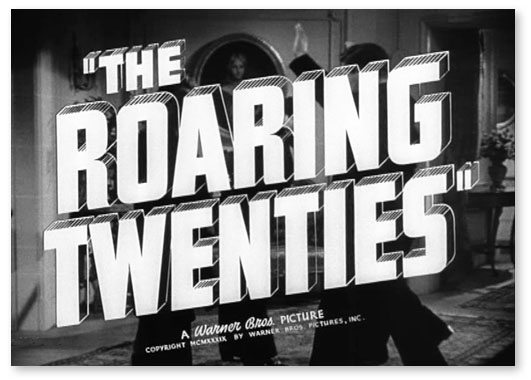
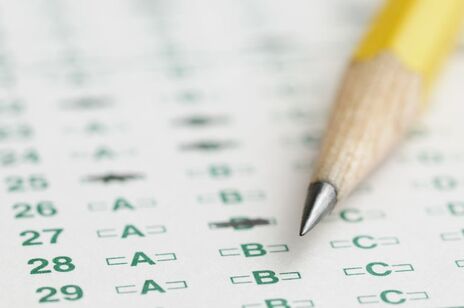
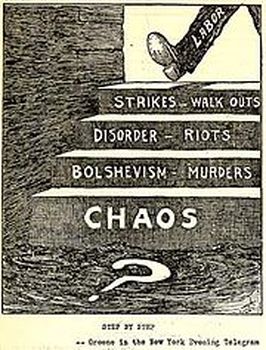
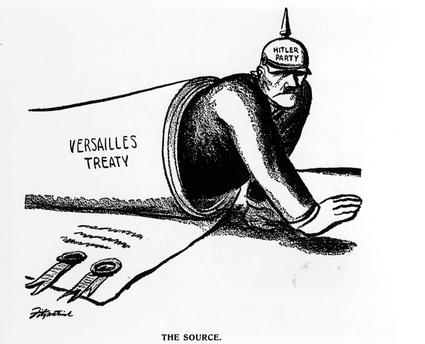
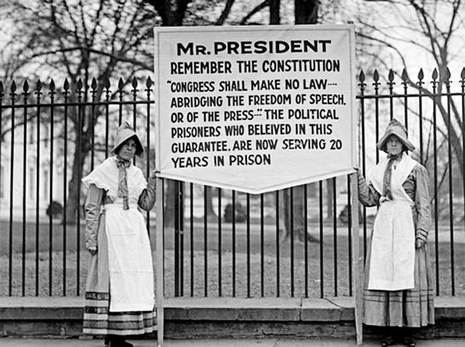
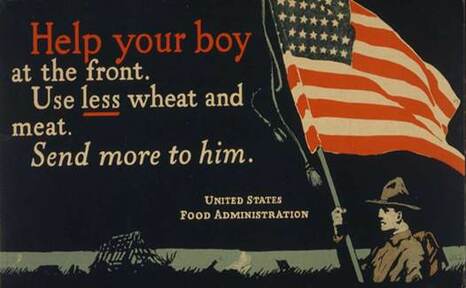

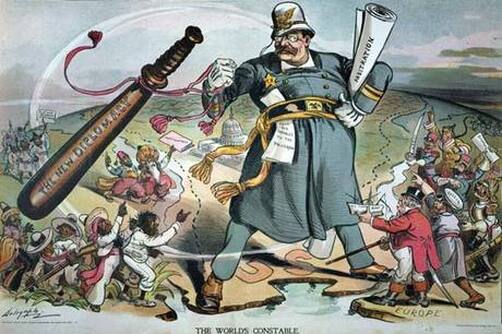
 RSS Feed
RSS Feed
